To other pages.
January 22, 2014
Throttle Linkage
I'm working on the carbs, but while I'm waiting for parts, I took a look at the throttle linkage.
This
linkage basically turns a back and forth motion from the accelerator
shaft arm to an up and down motion that rotates the carb throttle
shafts. There is also provision for spring return, a stop that
limits travel, a lost-motion mechanisnm that assures a
positive throttle rest position, and length adjustments for the various
links. Spring loaded ball swivels are included at various points
in the linkage to give a tight, smooth action. This all sounds
great, but the assembly I took out of the car looked pretty sad.
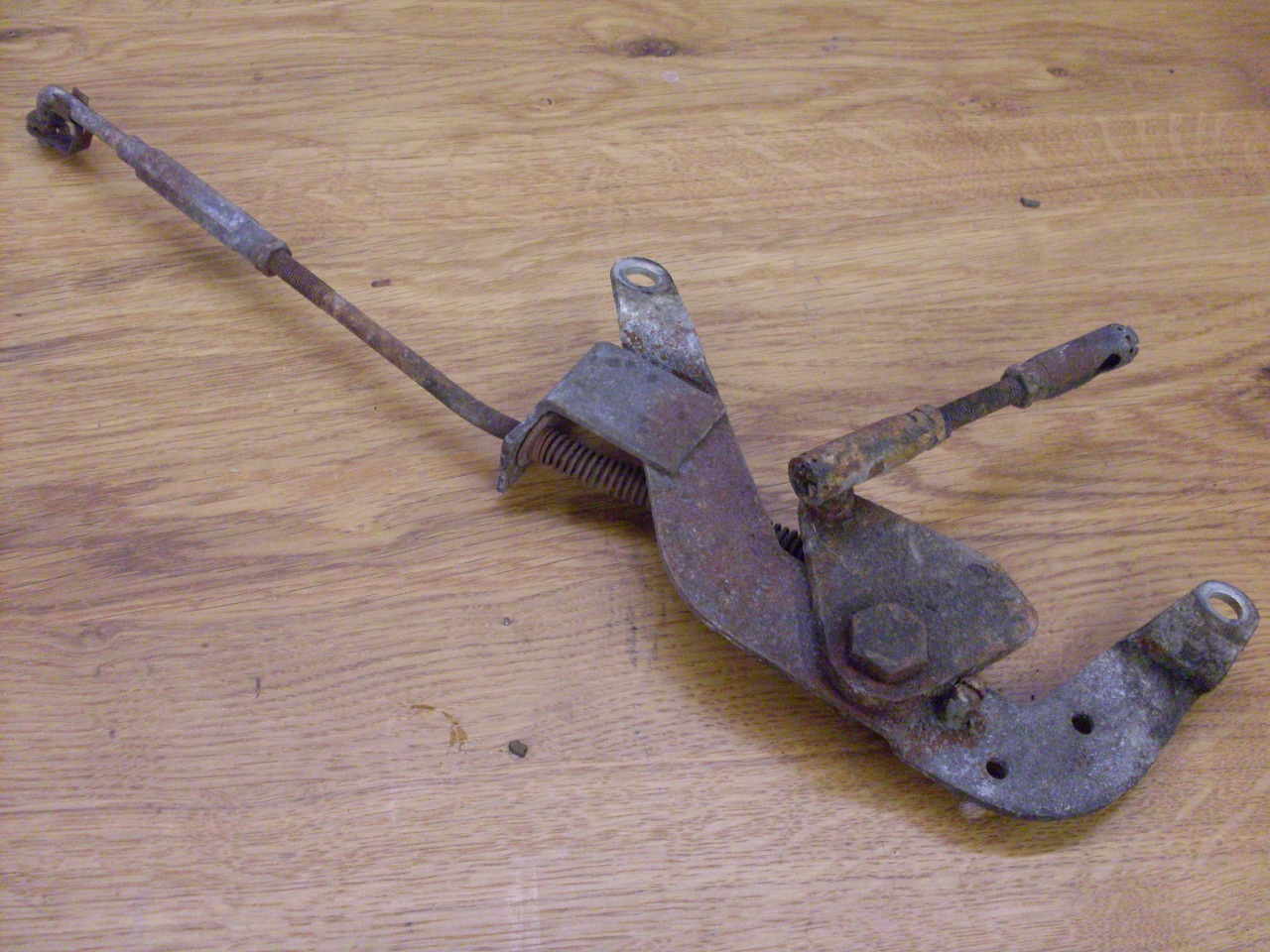
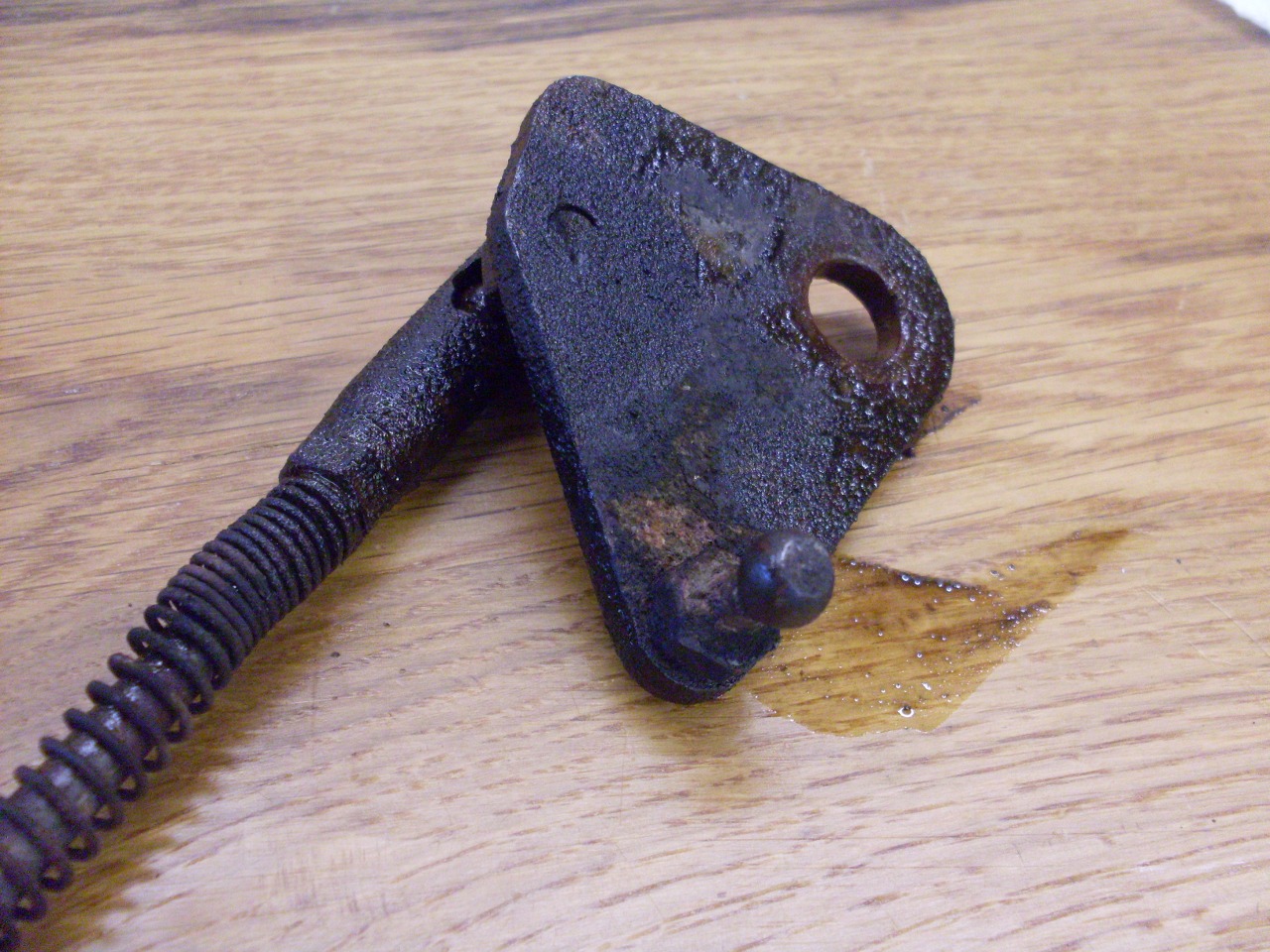
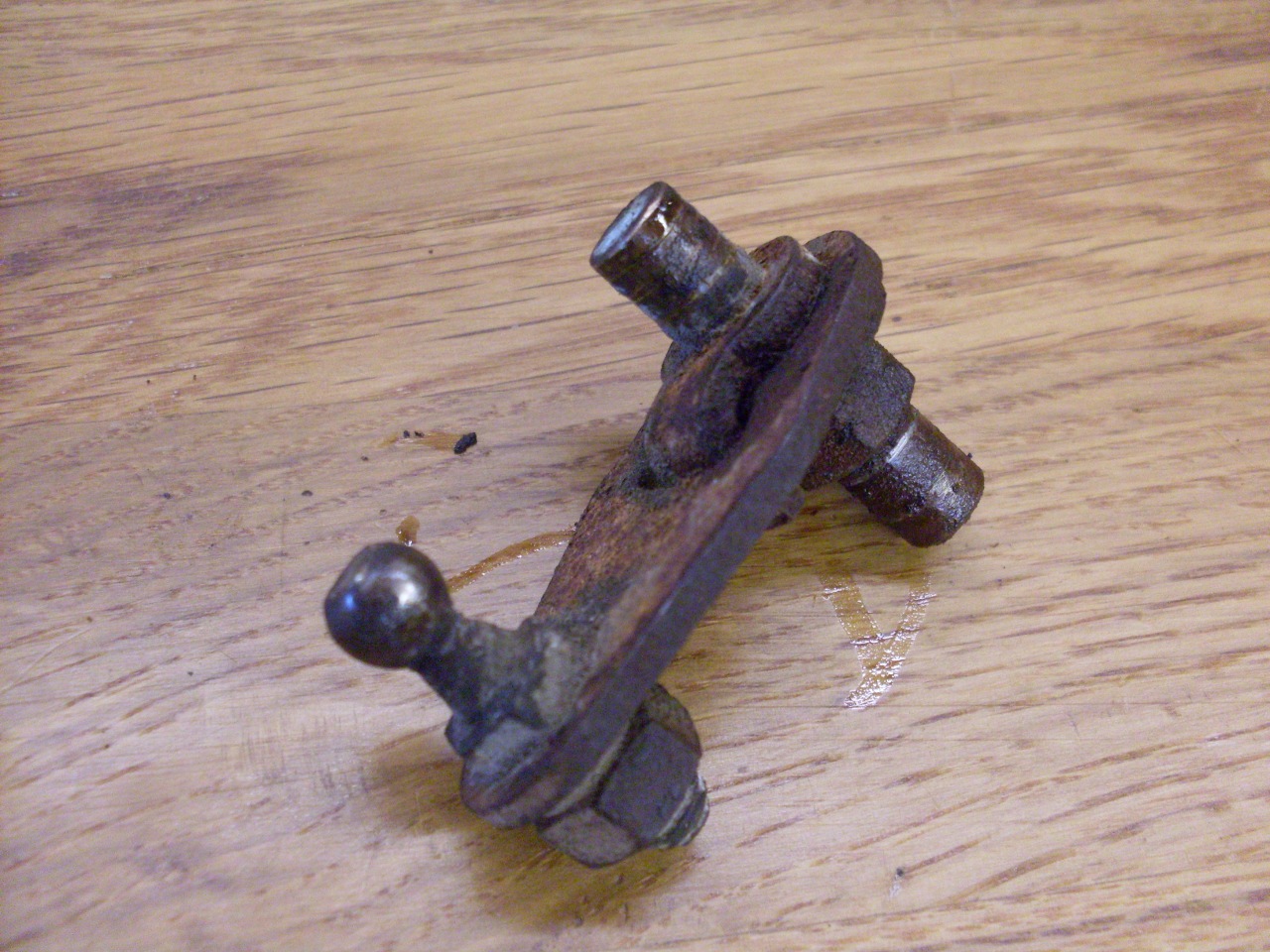
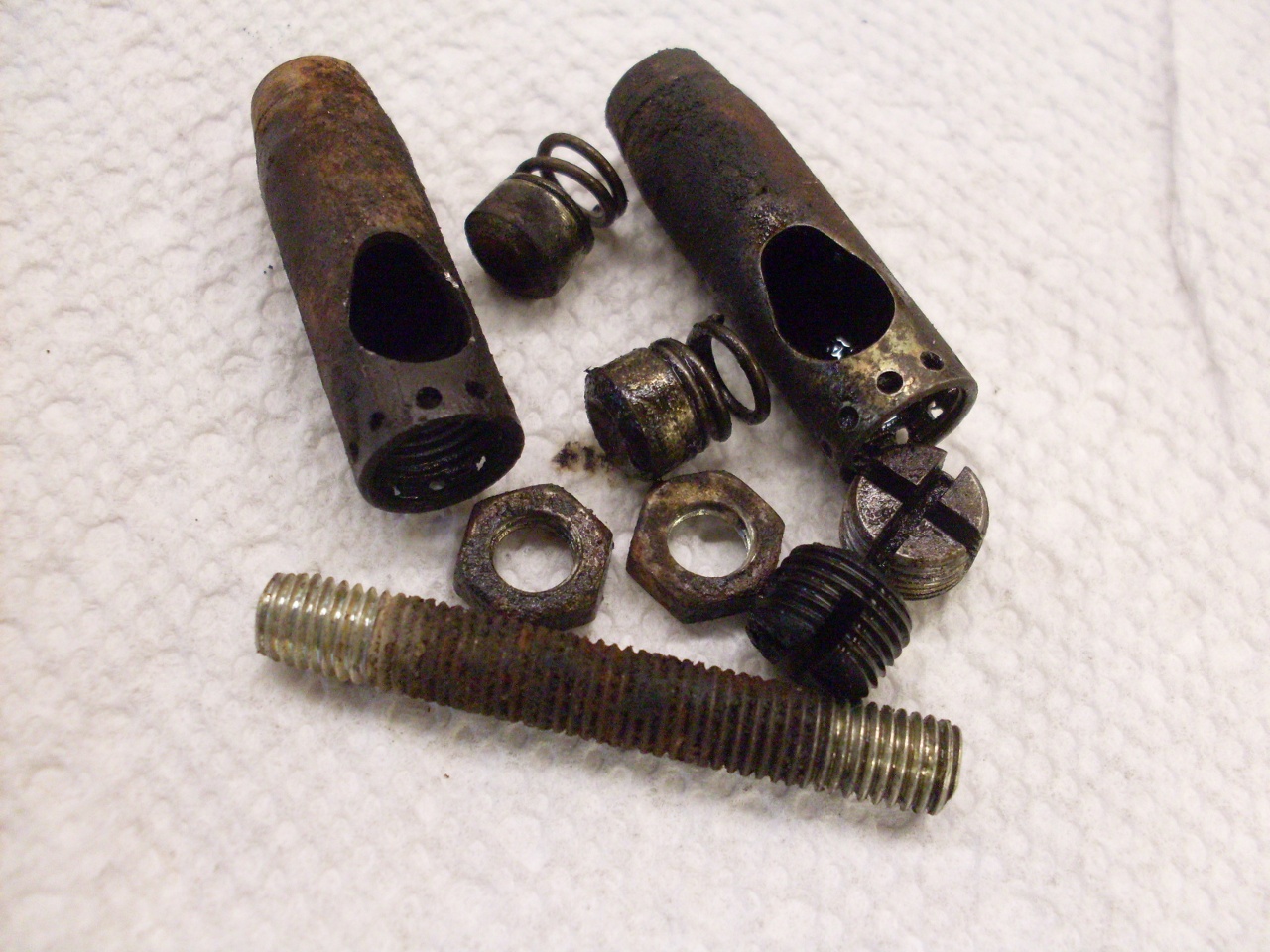
After
a little degreasing and derusting, some of the physical wear becomes
visible. The first pic shows how much the actuating rod was
eaten away by wearing against the bracket (just above the bend in the
upper rod). The lower rod was a new shop built replacement,
threaded and zinc plated. The bracket didn't fare much better,
with years of throttle movement sawing away at it. The last pic
shows the bracket repaired. Although the rod is threaded 1/4-28,
the original rod itself only measures about 0.218", suggesting the
threads were rolled on, giving the larger diameter. The
replacement rod is a full 1/4 inch, which required the slot in the
bracket to be enlarged a little.
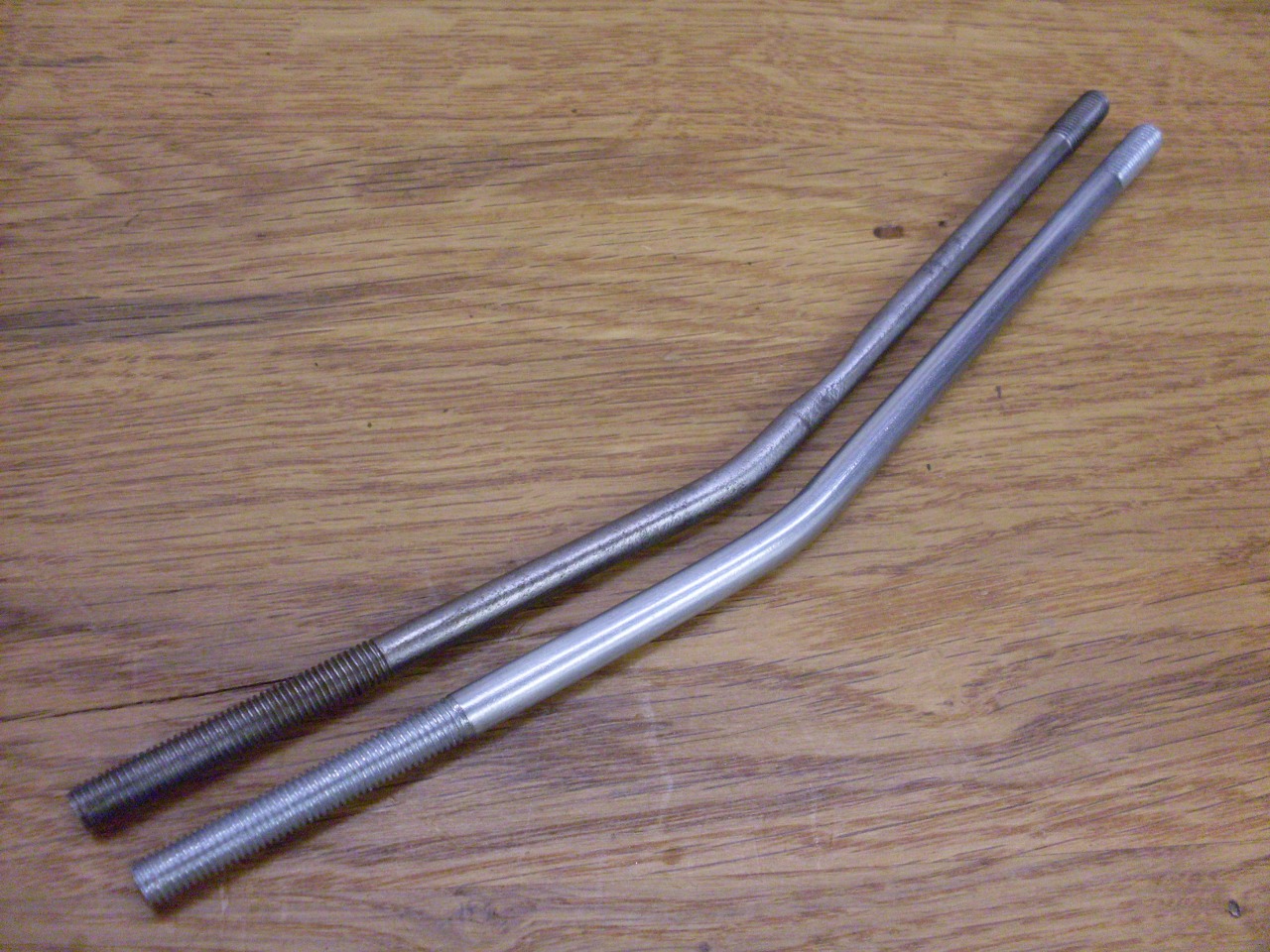
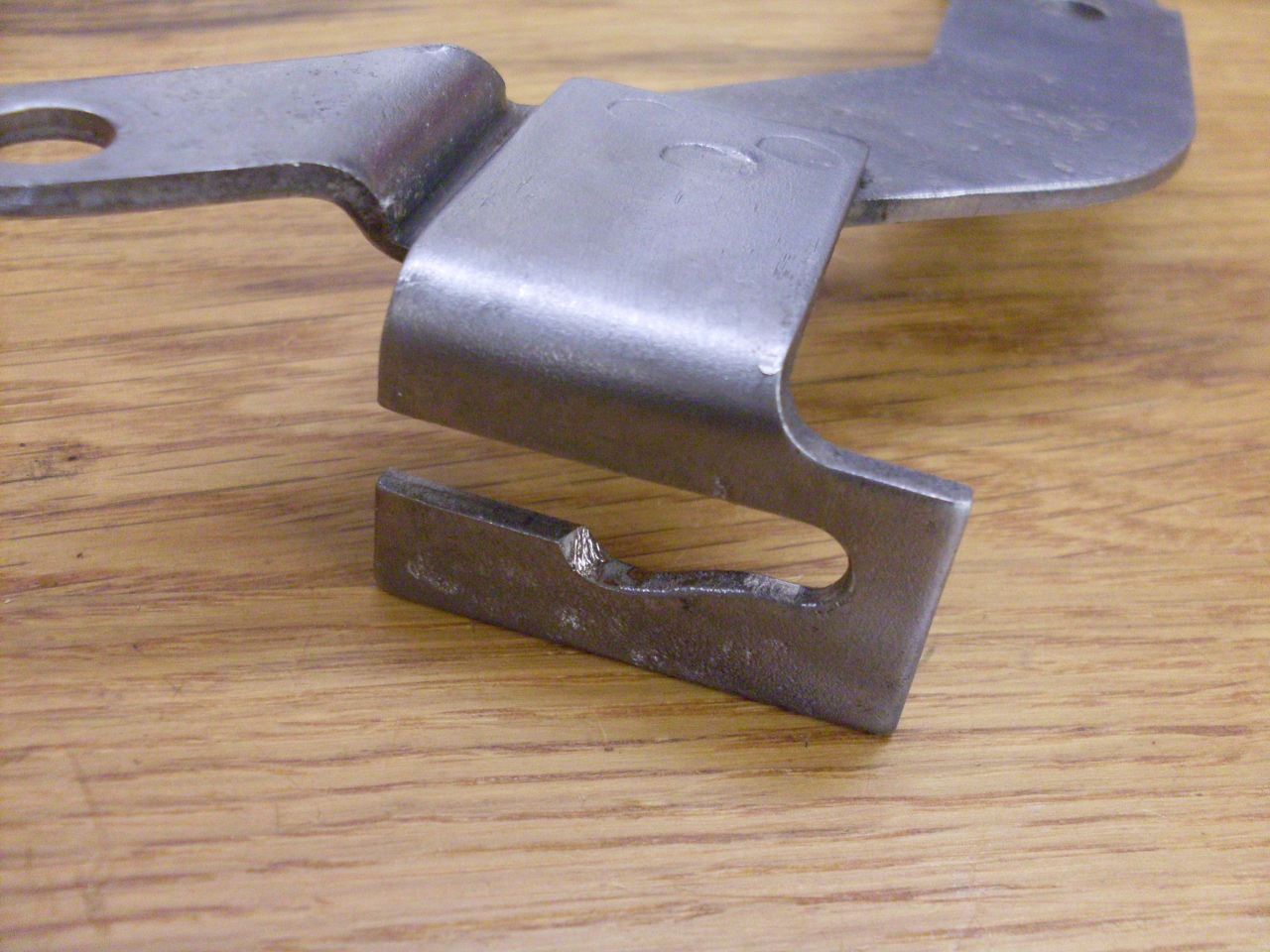
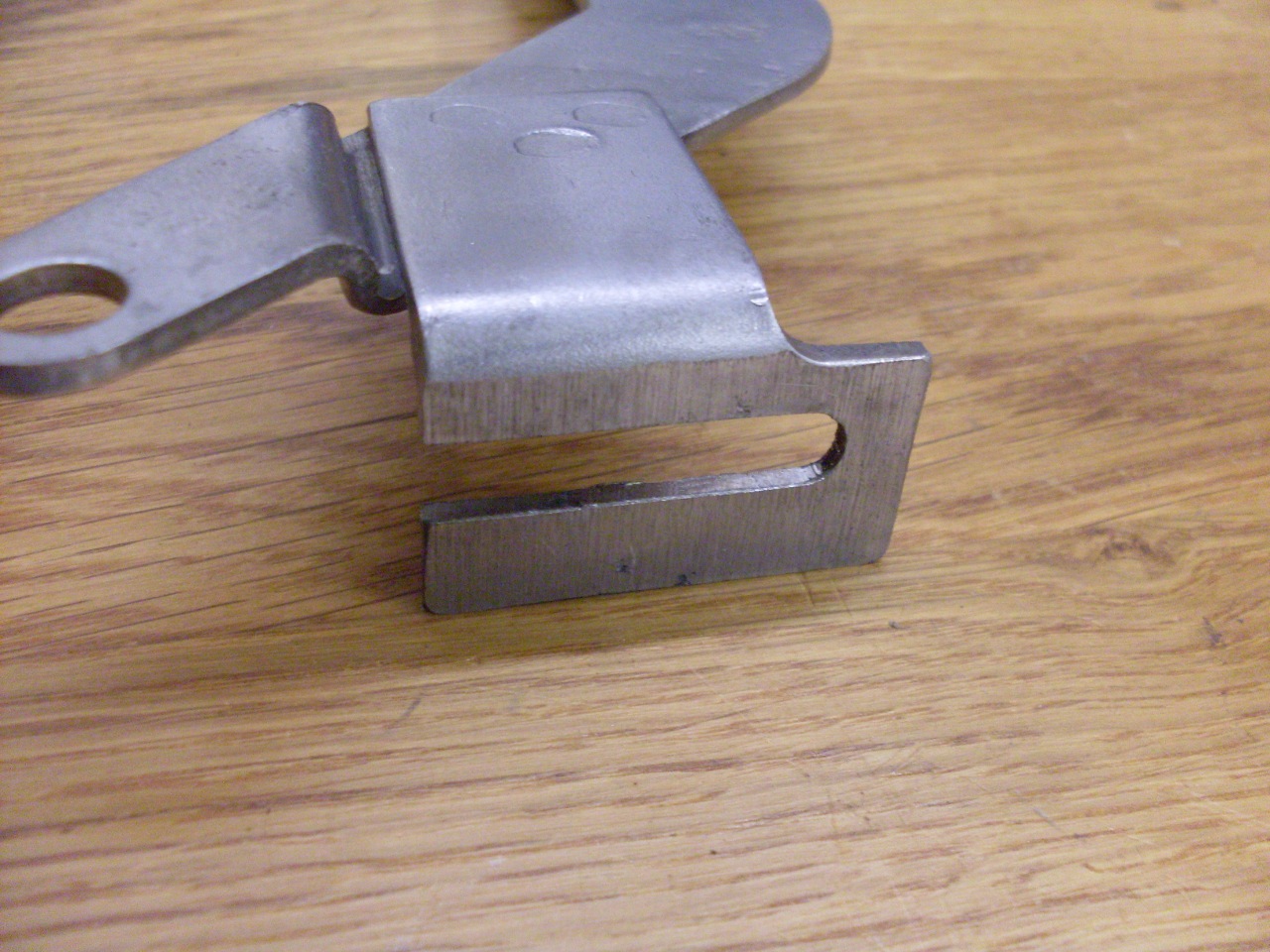
The
considerable rust left pits in some of the parts, but a fairly
heavy zinc plate will protect them from any further damage.
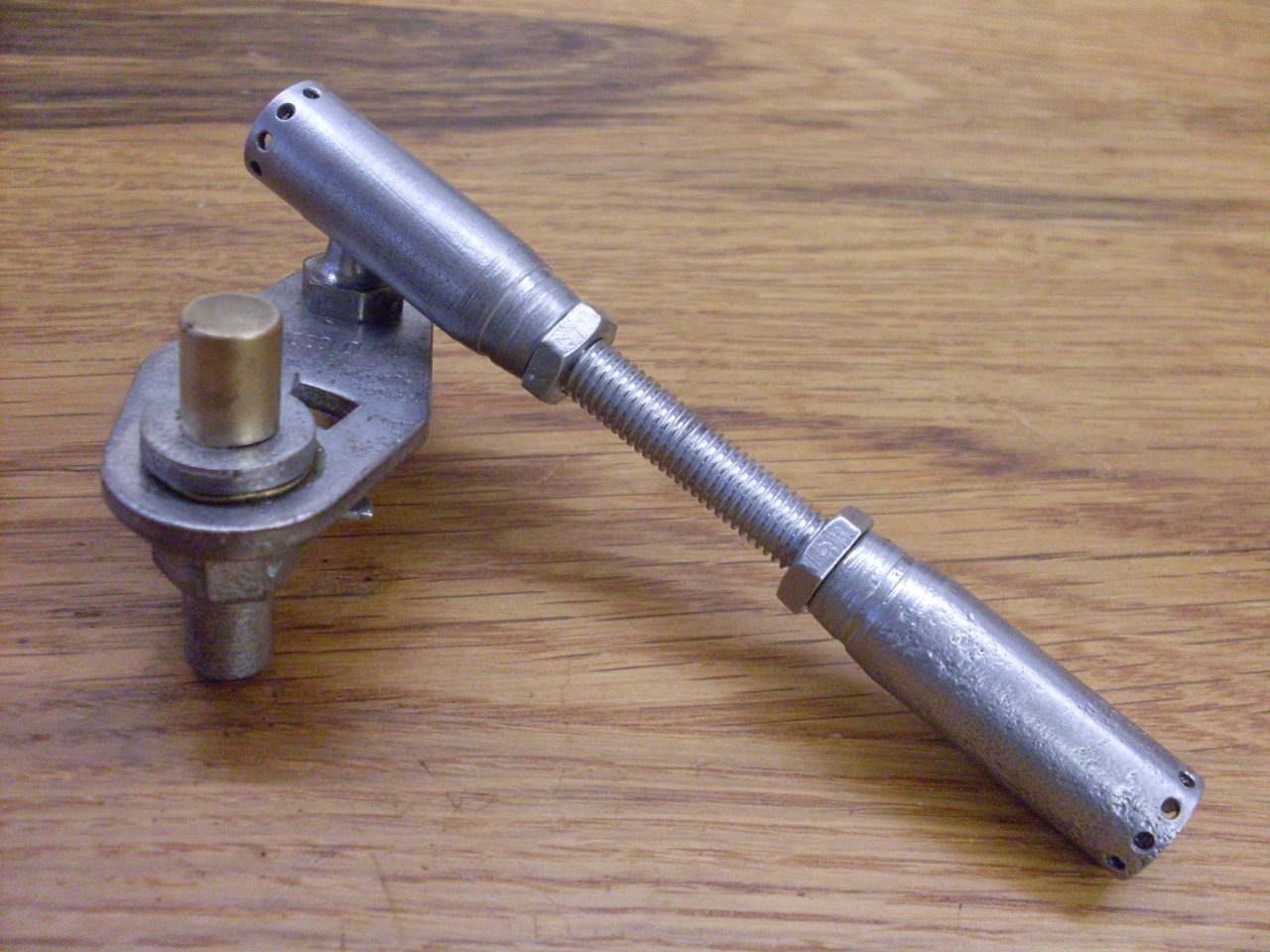
The
bell crank, which translates the motion from one rod to the
other, rotates on a sholder bolt. The fit was sloppy and
floppy, and just cried out for a better bearing arrangement. I
drilled out the bell crank for a flanged Oilite bushing. This
gives a much more satisfying fit to the sholder bolt, and the flange
keeps the crank from rubbing on the bracket.
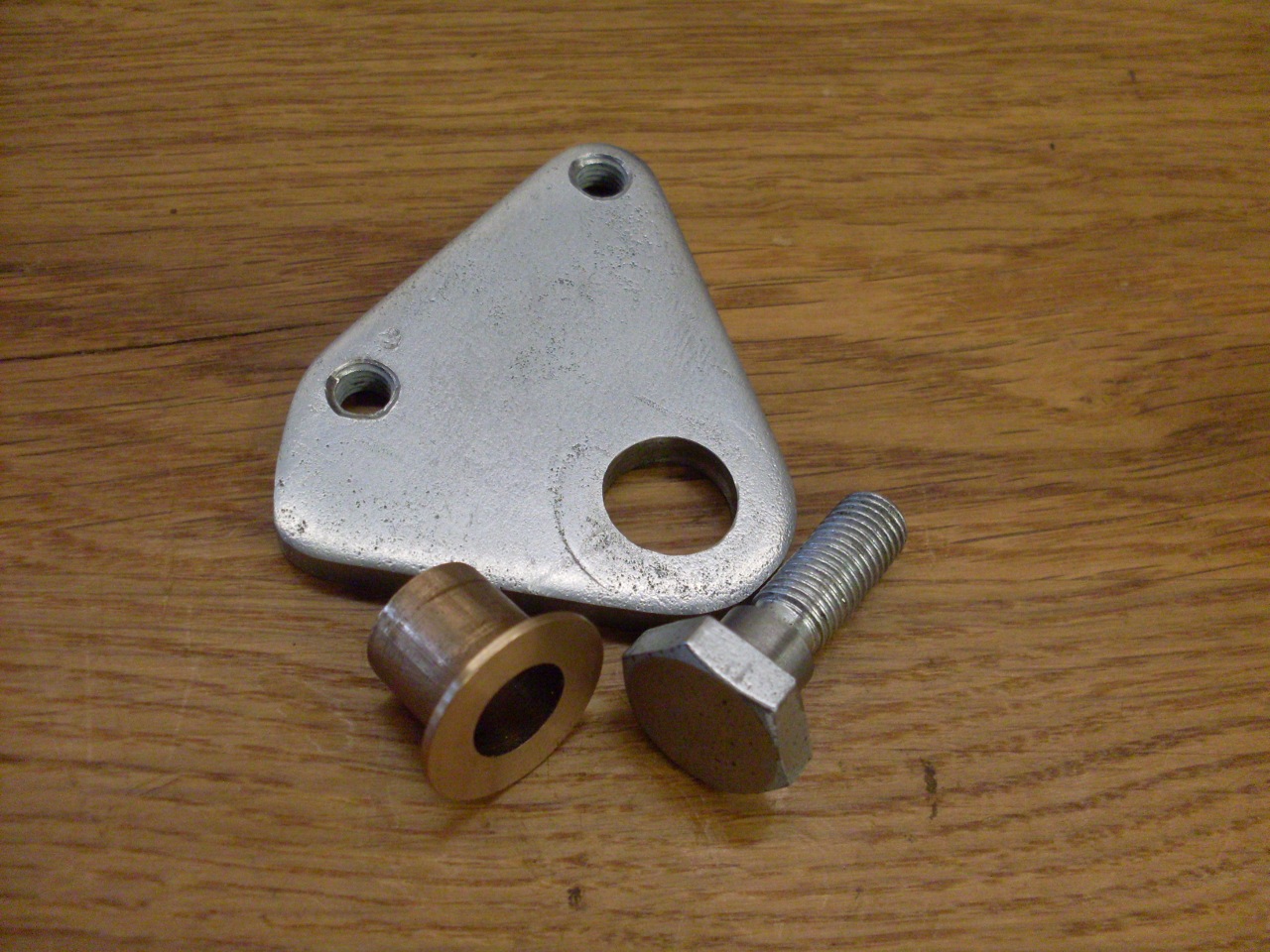
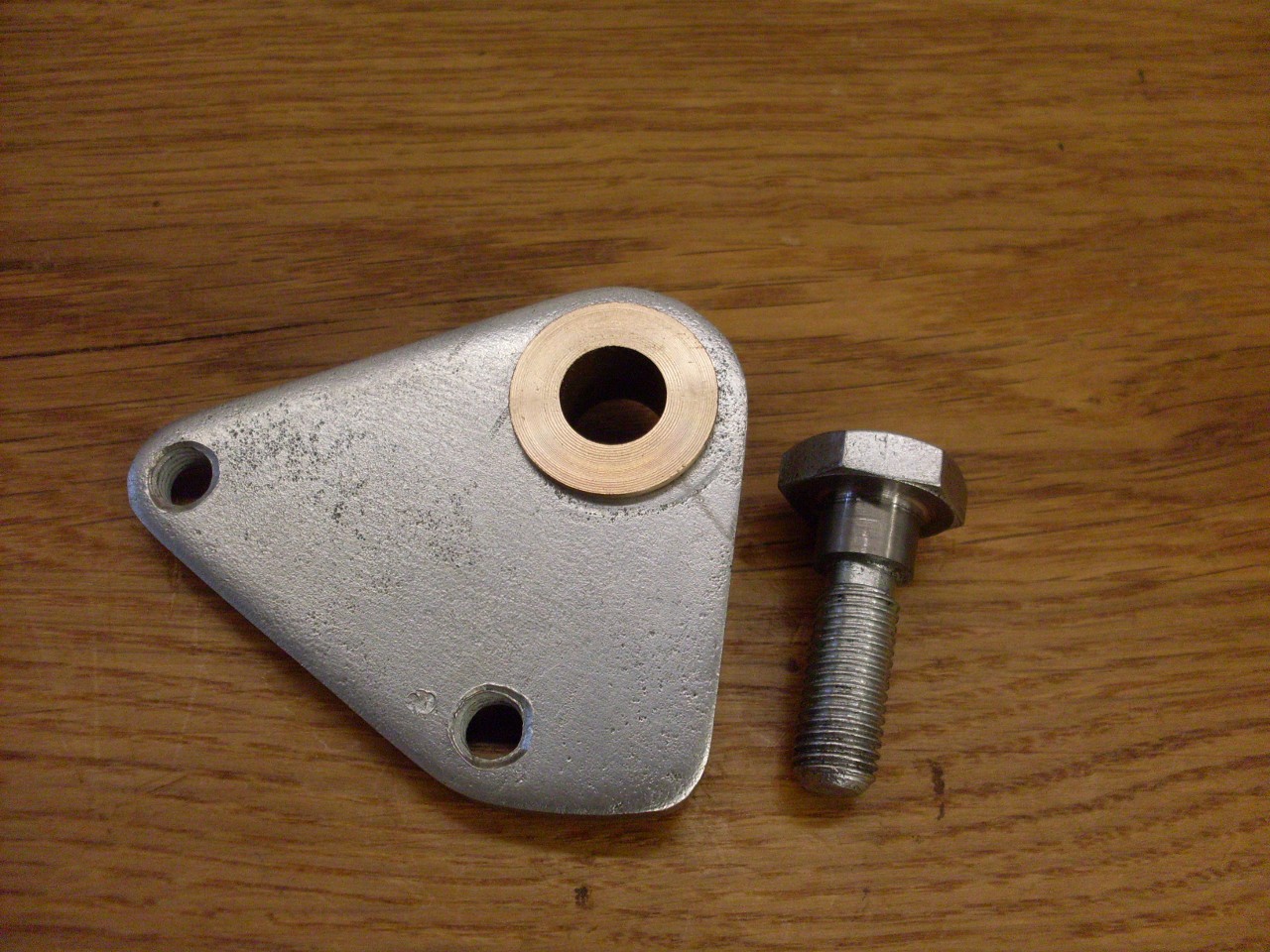
The
little folded coupling clamps that grip the carb throttle shafts
were just rusty, but a couple of the small bolts were siezed in their
nuts and broke off when I tried to remove them. They look like
maybe 6-32, but are really 4BA threads like a lot of small fasteners on
this car.
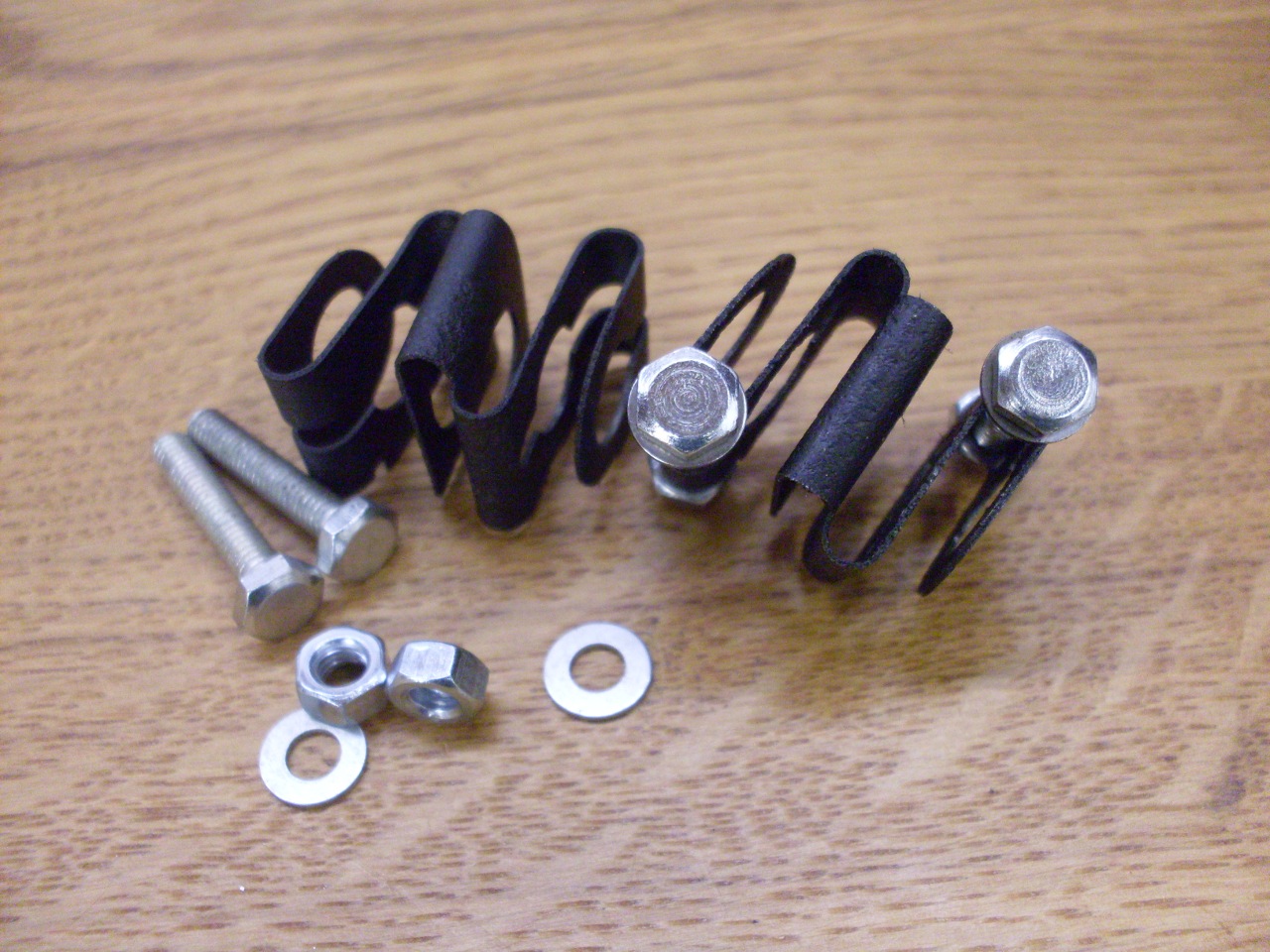
The final assembly works way smoother and tighter than how I found it, and maybe even better than original.
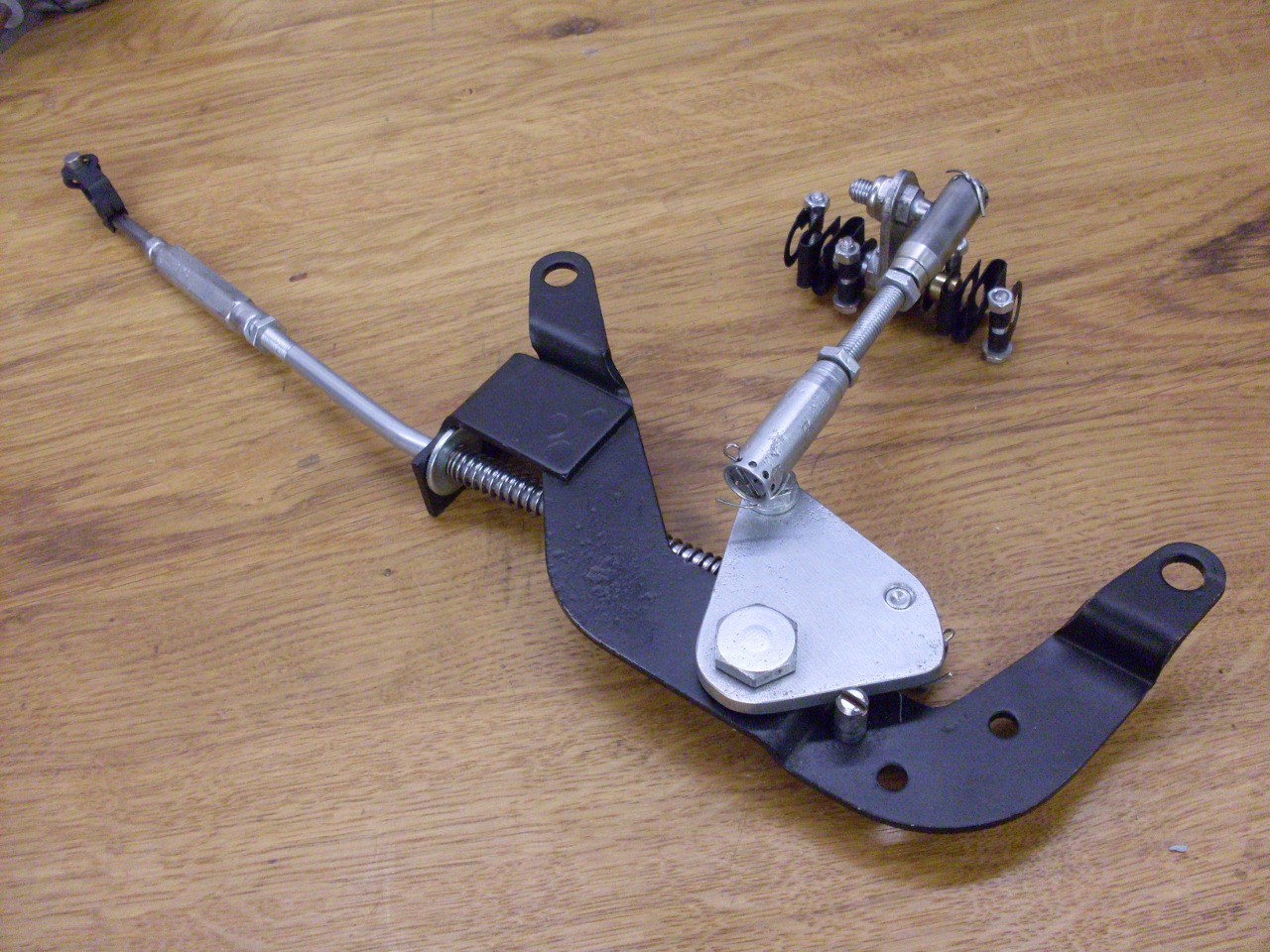
Comments to: elhollin1@yahoo.com
To other pages.